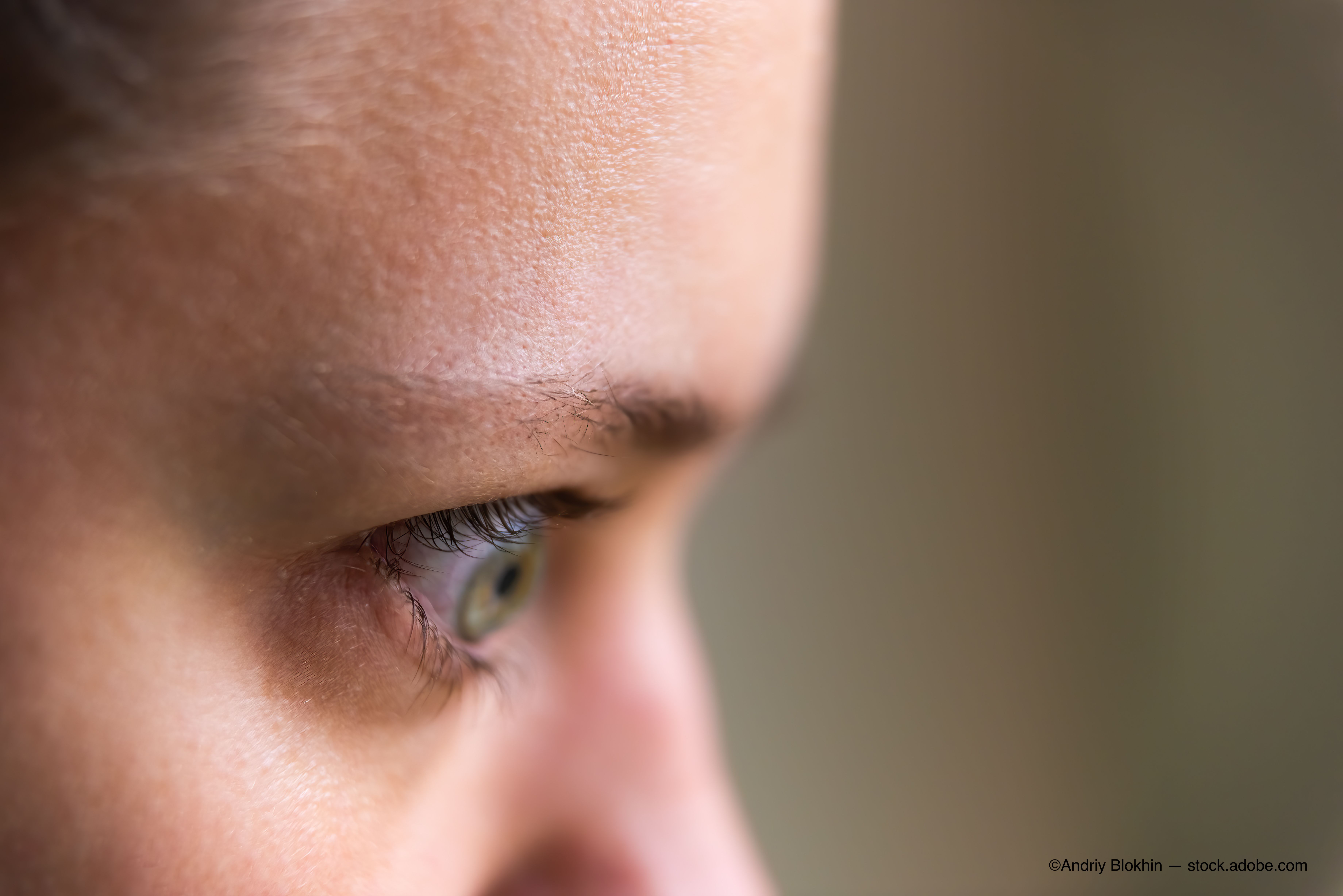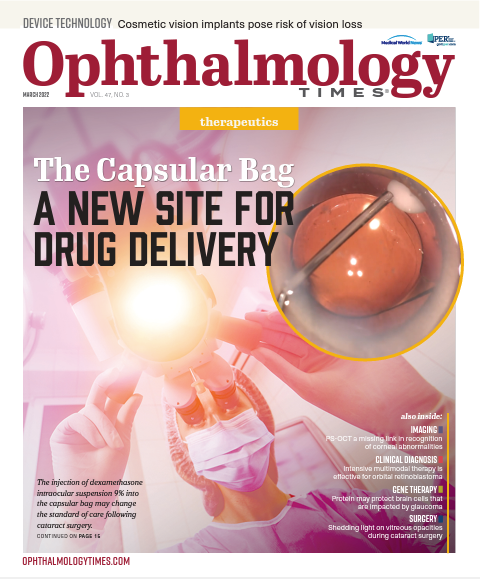Publication
Article
Digital Edition
The bright future of TED
Author(s):
Treatment options beginning to evolve from traditional therapies

The thyroid eye disease (TED) arena is finally beginning to evolve. Traditional therapies with their sometime limited success are making way for new drugs with the potential to provide sustained benefits for patients, according to Erin Shriver, MD, a clinical professor in the Department of Ophthalmology and Visual Sciences at the University of Iowa Carver College of Medicine in Iowa City.
Teprotumumab (Tepezza; Horizon Therapeutics), a human monoclonal antibody against IGF-1 receptor that received FDA approval in 2020, is effective for treating patients with moderate to severe TED who received a diagnosis within 9 months of the intended start of treatment. Infusions of the drug are performed every 3 weeks over 6 months for a total of 8 infusions.
Clinical trials of teprotumumab
In the phase 2 clinical trial of teprotumumab, investigators randomly assigned 42 patients to teprotumumab and 45 to placebo. In phase 3, they randomly assigned 41 patients to teprotumumab and 42 to placebo.
The results showed that at 24 weeks, the proptosis improved by 2 mm or more in 82.9% of the patients assigned to teprotumumab and in 9.5% of those assigned to placebo. At that same time point, the proptosis decreased by 2.95 mm and 3.32 mm, respectively, in the patients included in the phase 2 and phase 3 trials.
Other benefits included a grade 1 improvement in diplopia, an improved quality-of-life score, and a final clinical activity score of 0 or 1. Adverse events included inflammatory bowel disease, diarrhea, hyperglycemia, muscle spasms, mild nausea, hearing impairment, and infusion reaction.
Improved toolkit
The ability to treat patients with TED with resultant better results has been improved because of the availability of teprotumumab.
Shriver, who is also the Jim O’Brien Gross and Donnita Gross Chair in Ophthalmology at Iowa Carver, related the case of a 73-year-old woman who had had TED for almost 3 decades and underwent a plethora of treatments. At the most recent visit, she presented with new-onset binocular diplopia and orbital pain. Shriver started the treatment regimen with prednisone for 3 days to ascertain the presence of inflammation to which the patient responded positively. Shriver than the treatment with 8 infusions of teprotumumab; the adverse effects included diarrhea and gastrointestinal upset, tinnitus, and decreased hearing. The proptosis decreased by 3 mm in the right eye and 4 mm in the left eye. The motility of the left eye decreased from –2 to –1 supraduction. The patient had a sustained response at 6 months after treatment was completed, according to Shriver.
Three of her other patients who also were treated for TED with teprotumumab experienced a range of reduction of proptosis from 2.5 to 4.5 mm.
Steps for ophthalmologists
Shriver outlined some practice steps for ophthalmologists to take in clinic for their patients with TED.
She recommended they keep TED in mind and control thyroid dysfunction. They also should advise patients about the importance of ceasing smoking and adopting healthy that includes taking a selenium supplement or eating Brazil nuts and supplementing with vitamin D. Additionally, she emphasized the importance of patient education; patients can receive unbiased information about TED in patient tutorials, such as those available at EyeRounds.org.
If ophthalmologists suspect TED, they should refer or treat patients early on in light of the fact that insurance company criteria vary. For example, some companies stipulate that in order to be covered, patients cannot have Graves disease for 9 months.
Shriver also mentioned that although traditional therapies have a role in treatment, patients have the opportunity to benefit from newer treatments and trials.
The future of TED
Shriver said she sees the present as a very exciting time in TED with the advent of better treatments. Previously, progress in the treatment of the disease was very slow compared with the advances in various diseases in other ophthalmic subspecialties.
However, numerous questions surrounding TED remain to be addressed. These include who will benefit from therapy, whether it be patients with chronic disease or those with low clinical activity scores; how many doses are needed; who is at risk of rebound and adverse events; and how costs can be controlled.
Shriver also pointed out the need for investigator-initiated trials with critical analysis of results, head-to-head trials, and the involvement of international colleagues to include more diverse patient populations.
“Other drugs are currently in the pipeline,” Shriver concluded. “The next few years should prove to be a very exciting time for patients with TED and the physicians who treat them.”
Erin Shriver, MD
E: erin-shriver@uiowa.edu
This article is adapted from Shriver’s presentation at the virtual Real World Ophthalmology meeting. She is an adviser and consultant to Horizon Therapeutics.

Newsletter
Don’t miss out—get Ophthalmology Times updates on the latest clinical advancements and expert interviews, straight to your inbox.




